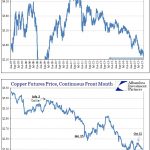43 percent of credit card holders carry a balance. Delinquencies are rising. It’s a deflationary debt trap.
Revolving Credit Hits New Record High
In December, revolving debt has topped the previous high-water mark of $1.021 trillion set in April of 2008. Debt as of December 2017 (the latest available) is $1.028 trillion.
Relationship Killer
In addition to student loans, credit card debt is another factor holding down home ownership and family formation. Studies show Credit Card Debt is a Relationship Killer.
Overdue Debt Hits 7-Year High
The Financial Times reports Overdue US Credit Card Debt Hits 7-Year High.
Distressed debt, defined as debt that’s at least three month’s delinquent, totals $11.9 billion. That’s an 11.5% fourth-quarter surge.
The Financial Times also notes “More Americans are also falling behind on their mortgages, for which problematic debt levels rose 5.2 percent over the same period to $56.7 billion.”
Deflationary Debt Trap Setup
These numbers are huge deflationary. When credit expands there is inflation. When credit contracts (think defaults, bankruptcies, mortgage walk-away events), debt deflation occurs.
Here’s my definition of inflation: An increase in money supply and credit, with credit marked to market.
Deflation is the opposite: A decrease in money supply and credit, with credit marked to market.
Looking Ahead















Leave A Comment